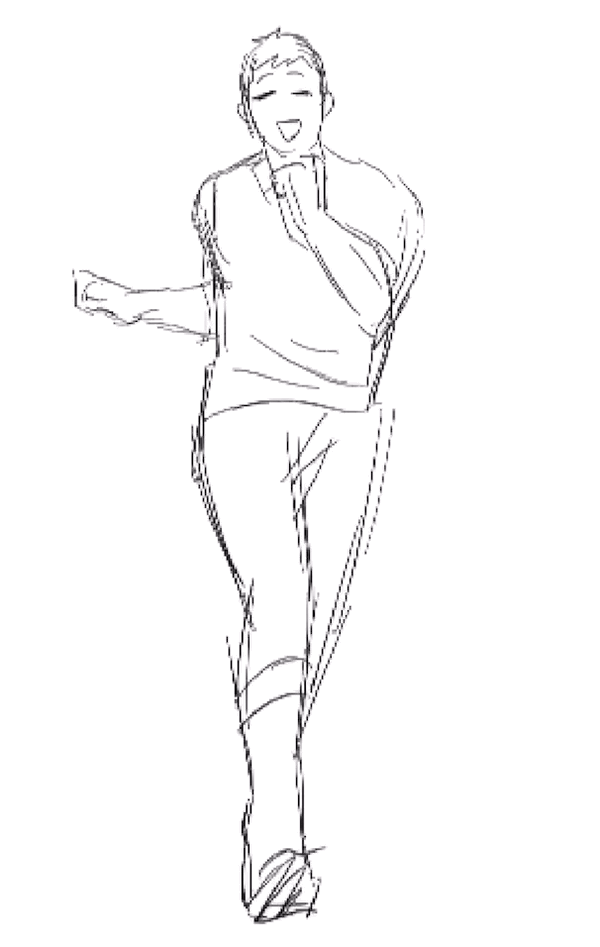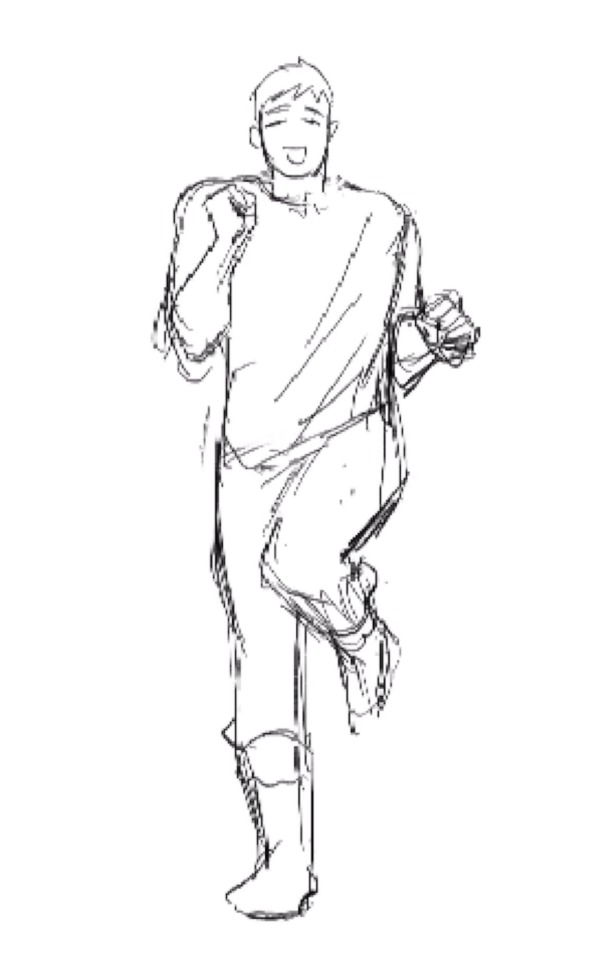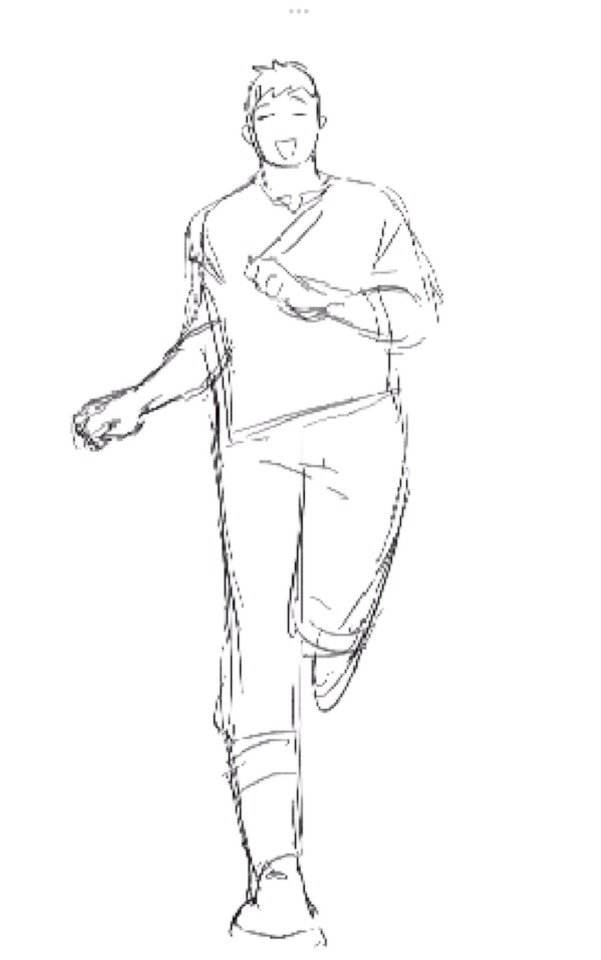#approaches
Explore tagged Tumblr posts
Text
youtube
Newest AI tool is providing high level reports - and starting to offer its own novel ideas
2 notes
·
View notes
Text

THEY FELT HER LOVE THEY FELT HER LOVE THEY FELT HER LOVE THEY FELT HER LOVE THEY FELT HER LOVE THEY FELT HER LOVE THEY FELT HER LOVE THEY FELT HER LOVE THEY FELT HER LOVE THEY FELT HER LOVE THEY FELT HER LOVE THEY FELT HER LOVE THEY FELT HER LOVE THEY FELT HER LOVE THEY FELT HER LOVE THEY FELT HER LOVE THEY FELT HER LOVE THEY FELT HER LOVE THEY FELT HER LOVE THEY FELT HER LOVE THEY FELT HER LOVE THEY FELT HER LOVE THEY FELT HER LOVE THEY FELT HER LOVE THEY FELT HER LOVE THEY FELT HER LOVE THEY FELT HER LOVE
17 notes
·
View notes
Text
The last few weeks of of Summer are going to spent preparing my altar for Hallowtide and the Winter Feasts, me thinks.
15 notes
·
View notes
Text
A look at TTRPG game design from @Flutes_Loot, and different approaches.
#TTRPG#Game Design#Flutes Loot#Approaches#DnD#D&D#Dungeons and Dragons#Tabletop#RPG#Roleplaying Games
7 notes
·
View notes
Audio
2 notes
·
View notes
Text
me when someone abruptly asks me if i want to go and do something fun together but the fun thing wasn't part of my daily plan:

#you could approach me on a day when i have nothing on and say d'you want free tickets to a theme park and lunch at your favourite restaurant#and i'd be like [sweating] can i think about it#be shh now#containment breach
45K notes
·
View notes
Text
sometimes it's not even enemies to lovers. sometimes you get handed the leash of a snarling, barking dog against your will and realize with dawning horror that you are now responsible for teaching it not to bite
28K notes
·
View notes
Text
Wanted to actually draw something and couldn’t so now you get Laios running like an anime girl animation

And my fav frames lol



#he is approaching#hes the king of the bby girls#delicious in dungeon#dungeon meshi#laios touden#fanart#dunmeshi laios#laios delicious in dungeon#gif#animation#dunmeshi
42K notes
·
View notes
Text

Expertise can't help you here.
#dungeon meshi#kabru#laios touden#falin touden#Happy Thistle Thursday once again. Have I been holding on to this comic for several weeks? Sure have!#I forgot how long it takes for Chimera Falin to come into play.#I still really love my 'better drawn' art of her - unfortunately it was several weeks too early for the anime only folks.#Slowly getting the hang of drawing Laios. I don't know why I struggle so much but I am getting...somewhere.#Meta time: God damn I love how the chimera shows off the expertise and gap between Kabru and Laios.#The truth is: they are both *right* and they are both *wrong*.#This creature is a combination of monster and human and they only have the skillset to deal with one of those.#Kabru goes for all the human vitals - but she isn't human.#Laios tries to approach her as a monster and is struck down by the humanity he sees in her.#She is something new that defies what they *both* understand about the world. And that makes her such a perfect antagonist.#The damsel was the dragon all along!#...She is really so cute though. Terrifying! But adorable. I am so excited to see the boom of fanart for her.
47K notes
·
View notes
Text
Final Blog Post - Beliefs, Responsibilities, and Approaches
Hi everyone. It's Jasmine!
As the semester wraps up, I’ve found myself thinking a lot about what being a nature interpreter really means to me. Growing up in Mississauga and coming from a Lebanese background, I’ve always felt connected to nature in special ways. For me, interpretation goes deeper than naming trees or recognizing birds. It’s about building emotional connections, making nature experiences inclusive, and nurturing responsibility for the world around us.
In this post, I’ll share some stories from my life that helped shape my personal ethic as a nature interpreter. I’ll also explain how these experiences have shaped my beliefs, responsibilities, and the approaches I find most meaningful.
Building Emotional Connections with Nature
One of the core beliefs guiding my interpretation ethic is that emotional connections to nature truly matter. These connections inspire genuine care and action towards protecting our environment. In our textbook, it mentions that effective interpretation helps visitors find personal meaning in nature (Beck et al., 2018). I relate to this idea deeply, as I’ve experienced firsthand how powerful an emotional connection with nature can be.
One moment that clearly stands out was from July 2015, during a family trip to Quebec City. Standing on a bridge over the Rivière Montmorency, I remember feeling completely in awe. I looked down at the landscape below, realizing how small yet connected I felt within the larger natural world. That moment wasn’t about the bridge or the river itself. It was about a feeling. A deep emotional realization of being part of something greater.

Feeling a deep sense of connection to nature on a bridge over Rivière Montmorency in Quebec City (July 2015).
According to Richard Louv, emotional experiences like these help build lasting bonds with nature. Louv believes that these bonds motivate people to care deeply about environmental issues (Louv, 2019). Reflecting on that experience, I understand exactly what he means. This motivates me to make emotional connections central to my interpretive practice.
Inclusivity and My Cultural Responsibility
Growing up in Mississauga, a city celebrated for its cultural diversity, inclusivity became another crucial part of my interpretation ethic. Nature belongs to everyone, yet many communities still face barriers in accessing meaningful experiences outdoors. Recognizing this challenge shapes my sense of responsibility as an interpreter.
My Lebanese heritage deeply informs my views on this issue. A beautiful example was when my family visited the Grande Mosquée de Paris in July 2022. Walking through its lush gardens, I noticed how seamlessly nature integrated into the cultural and spiritual space. Watching my younger brother explore the greenery made me appreciate how nature can connect diverse people through shared cultural experiences.

My brother exploring the peaceful greenery at the Grand Mosque of Paris, highlighting the intersection of nature and culture (July 2022).
Inclusivity is highlighted in our textbook as well. The authors emphasize that interpretation should welcome diverse perspectives and help bridge cultural divides (Beck et al., 2018). This aligns perfectly with my own experiences. Moving forward, my goal as an interpreter is to create experiences where everyone feels included, valued, and represented.
Storytelling as My Personal Approach
For me, the most effective way to share these values of emotional connection and inclusivity is through storytelling. Sharing stories makes interpretation authentic and personal. This approach allows people to find their own meaning within experiences, just as I have.
In July 2023, while still recovering from wisdom teeth surgery (yes, my cheeks were pretty swollen!), I visited Cherry Avenue Farms for cherry picking. Despite my discomfort, spending time picking fruit under the summer sun brought a surprising amount of peace and joy. This memory is simple but powerful. It taught me that nature experiences don’t have to be grand adventures. Small, relatable moments can make the deepest impressions.

Cherry picking at Cherry Avenue Farms while recovering from surgery - finding simple joy in nature (July 2023).
Research from National Geographic supports the power of storytelling in interpretation. Their findings show that stories significantly enhance emotional engagement. They also motivate people to take action for conservation (Modafferi, 2018). Using storytelling, I hope to inspire others to build their own connections and care deeply about nature.
Stewardship and My Sense of Responsibility
Another responsibility I strongly feel as an interpreter is to inspire stewardship. Protecting our natural spaces depends on people caring enough to act. Growing up close to Ontario’s parks and conservation areas has shown me how important stewardship truly is. As interpreters, we’re uniquely positioned to encourage active participation in caring for our environment.
Earlier this year, skiing with my friend at Glen Eden Ski Resort made me reflect deeply on this responsibility. While skiing down the slopes, I thought about how privileged I was to enjoy these natural spaces. It reminded me that interpretation isn’t only about enjoyment. It’s about ensuring others appreciate and protect these places for future generations.
The Government of Ontario highlights that stewardship involves responsible recreation and community involvement in conservation efforts (Government of Ontario, 2023). By emphasizing stewardship, I aim to help visitors move from passive observers to active participants in protecting nature.

Skiing with a friend at Glen Eden Ski Resort, reflecting on the importance of stewardship and protecting nature!(February 2025).
Reflecting and Moving Forward
My personal ethic as a nature interpreter is deeply tied to my experiences in Mississauga and my Lebanese heritage. Emotional connections, inclusivity, storytelling, and stewardship form the foundation of my interpretive approach.
As I continue on this path, I’ll strive to help others create their own meaningful relationships with nature. I believe that by sharing these experiences, we can inspire lasting change and foster genuine care for the world around us.
Thanks so much for joining me on this reflective journey. I can’t wait to see where it leads next!
– Jasmine 🌸🍃
References
Beck, L., Cable, T. T., & Knudson, D. M. (2018). Interpreting cultural and natural heritage: For a better world (Rev. ed.). Sagamore-Venture Publishing.
Government of Ontario. (2023). Published plans and annual reports 2023–2024: Ministry of Environment, Conservation and Parks. https://www.ontario.ca/page/published-plans-and-annual-reports-2023-2024-ministry-environment-conservation-and-parks
Louv, R. (2019, October). What is nature-deficit disorder? Children & Nature Network. https://www.childrenandnature.org/resources/what-is-nature-deficit-disorder/
Modafferi, M. (2018). Strategy share: The power of storytelling for conservation. National Geographic Education Blog. https://education.nationalgeographic.org/resource/strategy-share-power-storytelling-conservation
0 notes
Text
Neville Golvala - Redefining Digital Marketing for Modern Businesses
Digital marketing is evolving faster than ever, and Neville Golvala is leading the way. In this video, discover how Golvala’s innovative strategies—rooted in data analytics, AI-driven personalization, and emerging technologies—are transforming the way businesses engage with their audiences. Learn how his approach to digital marketing helps companies stay ahead of the competition in a digital-first world. Watch now to explore the future of digital marketing and how Golvala is shaping it!
#DigitalMarketing#Business#Businessman#Data Analytics#InnovativeStrategy#Approaches#BusinessSuccess#Risk
0 notes
Text
one thing that took me embarrassingly long to learn is "sometimes when people say things, they will not be true."
I used to tell people about this revelation and they'd be like yeah.....duh.....but like, why wouldn't my base assumption be that you're communicating to me in a straightforward manner. anyway, I get scammed a lot.
#example: a 'friend' in middle school told me I should ask a guy out. she said 'he'll totally say yes'.#he did not. which was the obvious outcome#but it took me years to realize that she'd said that hoping to fuel some drama for her own entertainment.#ANOTHER EXAMPLE#a guy in college approached me saying that he'd been seeing me around campus but was always too shy to talk to me#and that he really wanted to get to know me#so I was like wow 🥺 romance 🥺 and hopped into bed with him#and afterward I was like what do you wanna do 😊 should we see a movie 😊 should we go out 😊#and he was like nope. byeeee.#and I realized I got bamboozled into sex#total shocked pikachu face#I'm still not the best at this tbh. I'm like 'why would this person lie to me. lying is bad'.#anyway this is why I not looking forward to entering the dating world again#DONT BAMBOOZLE ME I'M GULLIBLE
18K notes
·
View notes
Text
Why Suhyun An Approach to Chiropractic Biophysics is Shaping the Future of Patient Care

In the field of chiropractic care, Suhyun An’s approach to Chiropractic Biophysics (CBP) stands out as a revolutionary method that’s changing the landscape of patient care. Known for its scientific rigor and innovative treatment strategies, CBP under Suhyun An guidance is not only enhancing the effectiveness of chiropractic care but also reshaping the way patients view and experience healing.
What is Chiropractic Biophysics (CBP)?
Chiropractic Biophysics is an advanced chiropractic technique that integrates the principles of biomechanics, posture correction, and spinal alignment to restore optimal function in the body. Unlike traditional chiropractic care, which often focuses on spinal adjustments, CBP takes a holistic approach by analyzing and correcting postural distortions, improving spinal alignment, and enhancing overall health. This methodology emphasizes the science of proper posture and its direct impact on neurological function, enabling chiropractors to provide more comprehensive and sustainable treatments.
The Unique Approach of Suhyun An
Suhyun An’s dedication to Chiropractic Biophysics stems from a desire to provide her patients with long-term solutions, rather than just temporary relief. She has studied and refined the principles of CBP, making it an integral part of her practice. By combining her in-depth knowledge of biomechanics with advanced diagnostic tools, Suhyun An tailors treatment plans that are personalized to each patient’s unique spinal condition.
Her approach is rooted in evidence-based science, ensuring that each treatment is designed to improve structure, posture, and ultimately, the body’s function. Suhyun An uses sophisticated imaging technology to assess spinal alignment and posture in precise detail. From there, she develops a strategic treatment plan that may include specific chiropractic adjustments, exercise regimens, and lifestyle changes to promote long-term health benefits.
The Impact of CBP on Patient Care
What sets Suhyun An’s approach apart is her commitment to providing lasting results. Unlike conventional chiropractic treatments that may only offer short-term relief, Chiropractic Biophysics targets the underlying causes of pain and dysfunction. Through posture correction and spinal realignment, patients experience improvements not only in their physical symptoms but also in their overall well-being.
Patients treated with CBP often report feeling more energized, experiencing fewer headaches, and experiencing less pain in the back, neck, and joints. Many also see improvements in their balance, flexibility, and range of motion. The focus on posture correction is particularly valuable, as it addresses the root cause of many chronic conditions, including poor posture-related headaches, spinal misalignments, and even digestive issues.
By improving spinal alignment, Suhyun An’s CBP treatments also foster enhanced nervous system function. This is essential for a body’s ability to heal naturally, as the nervous system plays a critical role in regulating all bodily functions. Restoring proper spinal alignment helps ensure the optimal function of the nervous system, enabling patients to experience relief from conditions like chronic pain, sleep disturbances, and stress-related issues.
A Better Future for Chiropractic Care
Suhyun An’s emphasis on Chiropractic Biophysics is part of a larger trend toward evidence-based, patient-centered care in the chiropractic profession. Her work is inspiring other practitioners to adopt a more comprehensive, scientific approach to chiropractic care. As more patients discover the benefits of CBP, it is clear that this technique will play a major role in shaping the future of chiropractic care.
#suhyunan#chiropracticcare#chiropractic#health#holistichealth#wellness#PatientCare#Approaches#Methods
0 notes
Text

The Vigil
#insp/study of “Water with Swans” (1900)#by Ferdinand Keller#a fun approach on colors - different than how i'd usually imagine#art#dragons#fantasy art#fantasy illustration#fantasy creatures#dragon#artists on tumblr#inks#dragon art#swans
10K notes
·
View notes
Text

Innovative Approaches to Contemporary Music Performance in LondonInnovative Approaches to Contemporary Music Performance in London London has long been a hub for art... https://www.meoun.uk/innovative-approaches-to-contemporary-music-performance-in-london/?feed_id=76768&_unique_id=67670332ea01c
#Stories#Approaches#Contemporary#Contemporary_Music_Performance_and_Production_CMPP_Course_in_London#Innovative#London#Music#Performance
0 notes